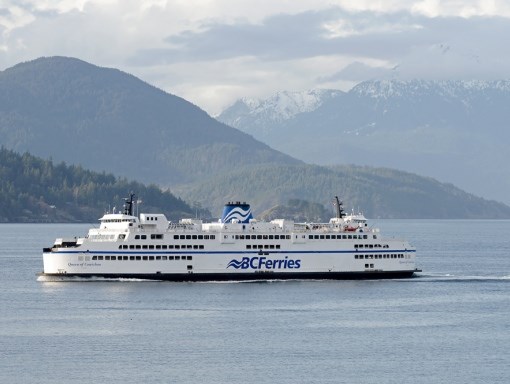Ferry users will soon get a chance to tell the province what they want to see in a long-term vision for coastal ferry services
The “visioning” is the government’s follow-up to one of the key recommendations in a review of coastal ferry services by former deputy minister Blair Redlin, released last February.
“We’re asking people to get beyond BC Ferries to what should a marine highway look like in the next 20, 30 years,” Transportation Minister Trevena told Coast Reporter, ahead of the launch of an online consultation in early 2020.
Trevena has already met with stakeholders on the Sunshine Coast and in Nanaimo, Victoria, Vancouver, Salt Spring Island, Haida Gwaii and Comox.
“What I heard time and time again is that people want to have ease of transportation,” Trevena said.
“They know that things are changing, that they won’t always want to be getting in a car and driving to the terminal, getting their car onto the ferry and going. They’re looking at more seamless travel so you can get on a bus, get to the ferry, get where you’re going and get on a bus – right down to could you pay for it all at one go.”
Trevena said she’s also heard from people very concerned about the state of the existing BC Ferries system.
Southern Sunshine Coast Ferry Advisory Committee (FAC) chair Diana Mumford is one of those people. “It’s really hard for me to envision the future when we’re struggling with the present and the funding and the process and when what we need on our route is a second ferry,” Mumford said
Mumford took part in the stakeholder meeting in Vancouver, and said she came away with the impression that most of the people there didn’t understand the issues facing ferry-dependent communities.
Mumford characterized the suggestions she heard in Vancouver as “pie in the sky” compared to the Sunshine Coast meeting, which was attended by the chair of the Gambier and Keats Island FAC and focused more on “the grassroots, day-to-day stuff that we deal with as ferry users.”
Mumford said she hopes Trevena came away from the stakeholder meetings with an understanding of the need for financial support for the existing ferry system.
“They refer to it as our highway, but when you look at the numbers … a fraction goes to ferries over roadway systems, transit and the things the transportation ministry deals with,” she said.
Trevena said she feels the government is already working on fixing the BC Ferries system as it is now, through initiatives like fare rollbacks, restoring cut sailings and adding “public interest” as a basis for decision-making.
One of the ideas for the future of ferries that’s most commonly raised on the Coast is an expanded foot passenger service.
In a letter to the mayors of Gibsons and Sechelt following the Union of BC Municipalities AGM in September, Trevena promised to fold the idea of a pilot project for a subsidized service between the Sunshine Coast and Vancouver into the latest consultations.
Mumford said as well as subsidies, a viable passenger service would require better transit links, given that for many people on the Coast there’s no easy way to get a bus to and from the ferry terminal.
Trevena said she’s heard that message clearly in the stakeholder meetings. “I’ve been working with BC Transit and others on how we can better integrate our transportation systems. These are some of the things that absolutely we do need to be dealing with in the short term and the long term.
Sunshine Coast Regional District Chair Lori Pratt was one of the local government officials at the Sunshine Coast stakeholder meeting with Trevena.
“This is our highway… We really have three streams of traffic. We have our passenger traffic, we have our car and driver traffic and we have our commercial and oversized traffic and they all have different needs,” Pratt said during a TV appearance Nov. 7, adding that dealing with commercial traffic also needs to be addressed in any vision of a future marine highway.
“We need to make sure our commercial is able to deliver here on the Coast. We have three days worth of food… We saw what happened when the Surrey went aground [in March]. We need to have dedicated commercial traffic coming back and forth.”
When it comes to adding new services, either subsidized or under contract, to supplement BC Ferries, Trevena said, “There’s not been a great willingness for the private sector to come forward and run ferry systems.”
She didn’t, however, dismiss the idea outright.
“When we get the results of the visioning we’ll sit down and take a hard look at where the opportunities are, bearing in mind that at the moment we have this contract with BC Ferries for the main routes. But this is really an opportunity to see what could be done looking at that big picture,” she said.
Trevena said heading into the online engagement she’s hoping people will think about “what would work for you and your community and for your businesses to ensure that you can participate fully in what B.C. has to offer.”
According to Trevena, the ministry is hoping to pull together the results of the visioning, along with “where we as a government would like to take it,” by the end of May.



